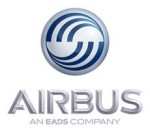Sun, Nov 18, 2012
Efficient And Error-Proof Identification Of Aircraft Components
Airbus has become the first commercial aircraft manufacturer to deploy Radio-Frequency-Identification (RFID) part-marking to aircraft components on all its aircraft families. This innovation, which will bring value-chain visibility, error-proof identification and efficiency savings in component lifecycle management, will be progressively rolled-out in 2013 to all seats and life vests for the A320, A330 and A380 aircraft families.

The annual volume of this RFID part marking extension is estimated to reach 160,000 RFID tags, roughly split across 120,000 life vests and 40,000 seats for these aircraft families. This complements the existing RFID part marking initiative on the A350 XWB which is already underway.
Tom Williams, Airbus’ Executive Vice President, programs says: “Permanent RFID part marking is an answer to the growing need for efficient and error-proof identification of aircraft components throughout their life.” He adds: “The use of RFID part marking will enable the automation of multiple operational processes and is a benefit for all involved in managing the component during its lifecycle: vendor, integrator, airline and MRO.”

The scope of efficiency savings with permanent RFID part marking is substantial. For example, in the past, each one of several hundred life-jackets and seats in the cabin would need to be manually checked and noted, necessitating lengthy manual data entry. But as each Airbus aircraft will soon come pre-equipped with RFID tags on these parts, just one person can read the RFID tags within a few minutes using a lightweight hand-held RFID reader.
The process automatically confirms the presence of each required item, verifies its location and looks-up the associated data about the part (e.g. maintenance history, expiration date etc.). This information can then be used to determine the aircraft configuration and prioritise maintenance planning for items due for inspection, overhaul or replacement.
More News
From 2023 (YouTube Version): Legacy of a Titan Robert (Bob) Anderson Hoover was a fighter pilot, test pilot, flight instructor, and air show superstar. More so, Bob Hoover was an i>[...]
Get The Latest in Aviation News NOW on Instagram Are you on Instagram yet? It's been around for a few years, quietly picking up traction mostly thanks to everybody's new obsession >[...]
Aero Linx: B-52H Stratofortress The B-52H Stratofortress is a long-range, heavy bomber that can perform a variety of missions. The bomber is capable of flying at high subsonic spee>[...]
Altimeter Setting The barometric pressure reading used to adjust a pressure altimeter for variations in existing atmospheric pressure or to the standard altimeter setting (29.92).>[...]
"Knowing that we play an active part in bettering people's lives is extremely rewarding. My team and I are very thankful for the opportunity to be here and to help in any way we ca>[...]
 Classic Aero-TV: Remembering Bob Hoover
Classic Aero-TV: Remembering Bob Hoover ANN FAQ: Follow Us On Instagram!
ANN FAQ: Follow Us On Instagram! ANN's Daily Aero-Linx (05.15.24)
ANN's Daily Aero-Linx (05.15.24) ANN's Daily Aero-Term (05.15.24):Altimeter Setting
ANN's Daily Aero-Term (05.15.24):Altimeter Setting Aero-News: Quote of the Day (05.16.24)
Aero-News: Quote of the Day (05.16.24)




